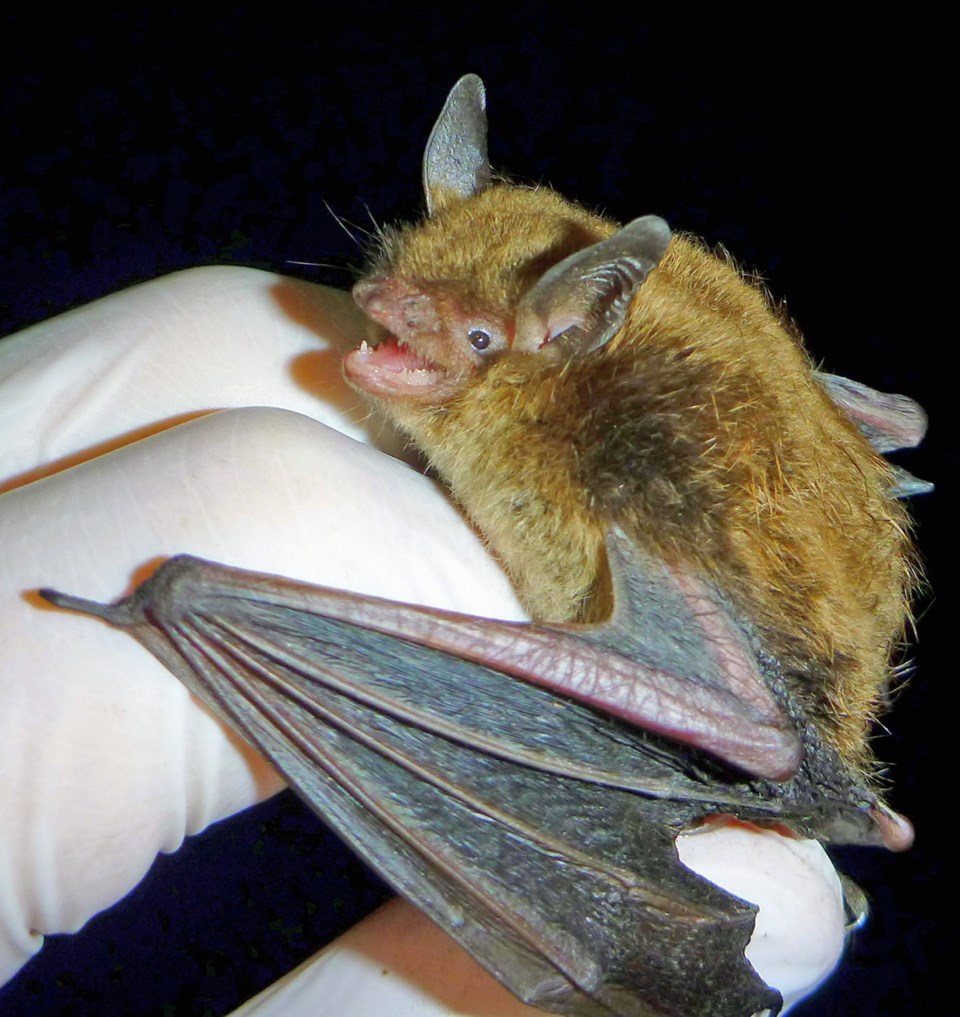Island Health is warning against direct contact with wildlife following the discovery of a rabies-infected bat in the bushes near Keating Elementary School.
Dr. Dee Hoyano, medical health officer for Island Health, said fewer than five adults were given a preventive vaccine against rabies after the bat was found Sept. 4.
It was found off school grounds near portables leased by an after-school contractor.
“Children should not touch, poke or pick up a bat,” Hoyano said in an interview.
Children are naturally curious about bats but they should refrain from teasing or taunting any wildlife, she said. Adults might also anticipate where and when they might encounter a bat and reduce that risk.
“We just want to emphasize a lot of these bat exposures don’t need to happen, and obviously then people won’t put themselves at risk of rabies exposure if they just don’t touch or handle or try to handle a bat,” said Hoyano.
Concern about bat encounters on Vancouver Island has heightened since the death of Nick Major, 21, of Parksville, from a rare viral rabies infection.
Major became infected after a bat flew into his hand, during the day, in mid-May. He developed symptoms six weeks later and died July 13 at St. Paul’s Hospital in Vancouver.
Hoyano said since then the health authority has received an “exponential” increase in calls about bats over previous years. “We are assessing every single one of those reports. The majority of them are people who have not needed preventative treatment, but we have offered treatment to a number.”
Saanich School District superintendent Dave Eberwein said he was told on Sept. 4 approximately four elementary-school-age children discovered the bat while they were exploring the woods.
The bat tested positive for rabies.
Generally, about 0.5 per cent of bats in B.C. carry rabies, and of bats suspected to have the disease and examined in the province, about 13 per cent test positive, Hoyano said.
In a letter to parents and staff, the health authority said a number of people who touched or handled the bat were assessed.
Hoyano said it’s unlikely children attending the Central Saanich school had contact with the bat during school hours.
The incident serves as a reminder, said Hoyano, for parents and staff to inform children that if they find an animal that appears to be ill or dead, they should immediately tell a teacher or other responsible adult so it can be removed (with proper gloves or equipment and placed in a hard container).
If any child or adult thinks they were exposed to the bat, Island Health said they should contact the communicable disease program immediately at 1-866-665-6626.
Direct contact includes having skin touched by a bat, or receiving a bite or scratch from a bat, said Hoyano.



